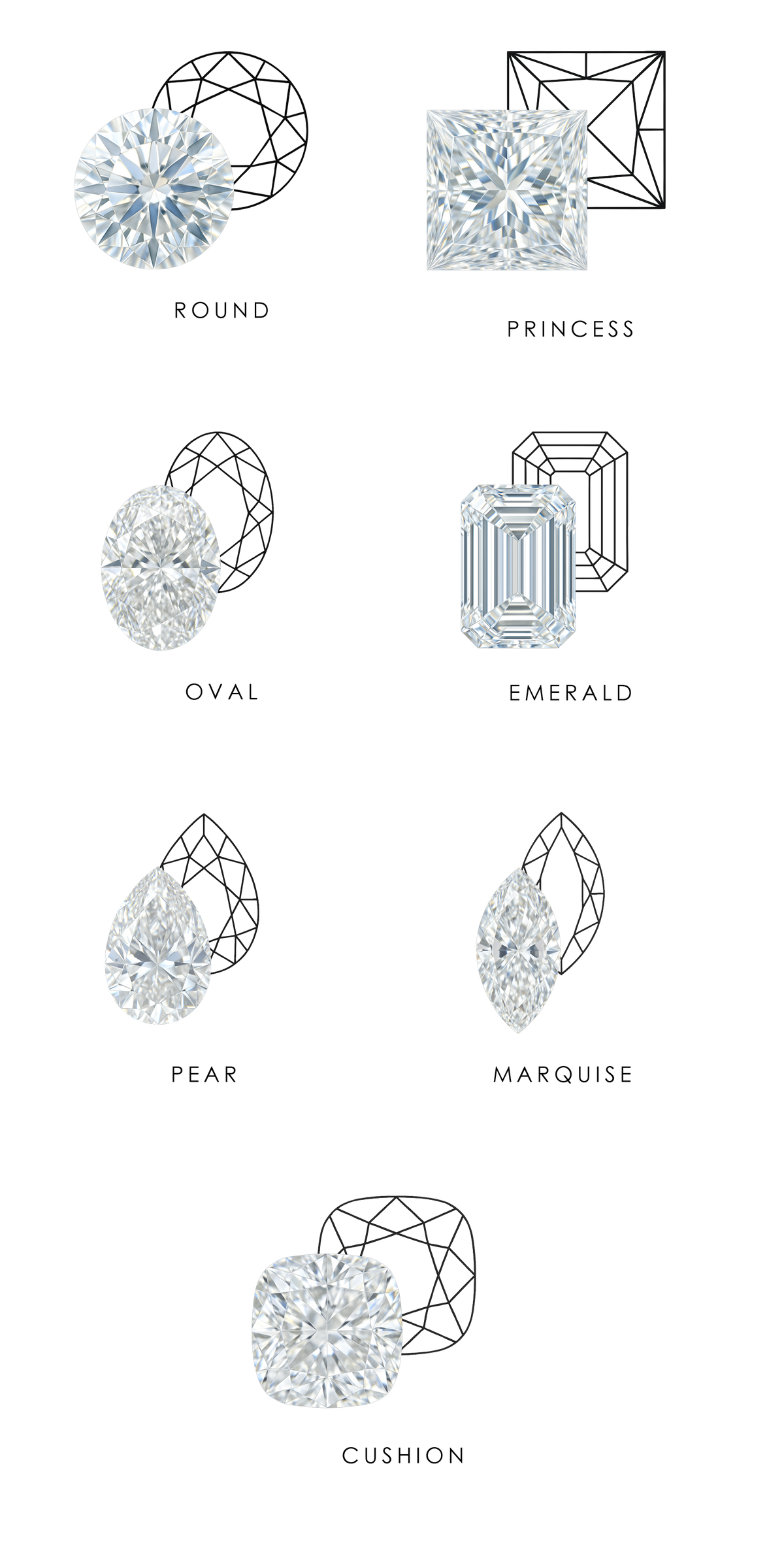


Let us help guide you in choosing the perfect diamond for your engagement ring.
When you are buying diamonds you are sure to come across the 4's during the purchasing process. The C's denote the characteristics of a diamond and are important to consider when choosing the right diamond for you.

The shape of diamond chosen for your ring is a personal preference. There are a range of beautiful options. You can choose to have the diamond set on its own (solitaire), with smaller diamonds set across the band, with smaller diamonds surrounding the main stone (halo), or a group of diamonds set together (cluster). The choice is yours!
Natural and Lab Grown Diamonds are both great options and which one to choose is based purely on personal preference. Below we have provided some further information to help you make the right choice for your diamond ring.
Natural diamonds are natural and formed underneath the earth with intense heat and pressure and are formed over billions of years. Natural diamonds cost more and the value of natural diamonds continues to rise.


These diamonds are created in a lab and are the same as natural diamonds physically, chemically and optically.
They are grown in two ways: a High Pressure, High Temperature (HPHT) process that mimics their natural formation in the Earth, or a Chemical Vapor Deposition (CVD) process. Both processes begin with a pure carbon seed arranged in a crystalline structure and result in a lab diamond that is identical to a mined diamond.
Visually they look the same and have the same chemical composition as a natural diamond - carbon.
Lab grown diamonds are around 50-60% less expensive than natural, but don't gain value over time in the same way that natural diamonds do.